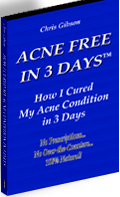 |
|
Scalp Folliculitis – Just a Fancy Name for Scalp Acne.
What does scalp folliculitis look like? Most people are not aware of the appearance of scalp folliculitis, since it most commonly appears on the scalp. Scalp folliculitis manifests itself as small pustules that are white-yellowish in color. This condition usually looks ringed by narrow red circle-like blisters. Even though scalp folliculitis typically clogs the hair follicle, hair can still grow through pustules. Many times, hair also grows right next to the area where the pustule resides on the hair follicle. When picked at, pustules may ooze sebum or bloodstained pus. In rare cases, scalp folliculitis may develop into boils or other skin infections. In even more rare cases, bacteria may enter through the infected hair follicle and travel into the blood stream, thereby invading the body. How do you know if you have scalp folliculitis? If you find the area surrounding your hairline to be consistently itchy, this may be a sign of scalp folliculitis. Even if you only sense a small amount of lesions, this may still be a sign of folliculitis. Scalp folliculitis often infects only a small portion of the scalp, or in more severe cases, it may spread to many areas of the scalp. Many people who suffer from scalp folliculitis may find that the infected areas are itchy and hard to keep from touching. Once the infected areas have been scratched at or continually touched, they quickly become hard or crusted. This, in turn, may cause you to want to scratch at them even more! So what causes scalp folliculitis? It appears that scalp folliculitis begins in much the same way that acne is formed. Like acne, scalp folliculitis involves bacteria (and sometimes fungi) that become trapped in a pore. In the case of scalp folliculitis, the bacteria propionibacterium acnes (P. acnes) are the main culprits. Another main contributor is the Staphylococcus bacterium, which is responsible for a variety of eye and nose infections, as well. Other contributing factors are yeasts and mites. When bacteria invades a hair follicle and mixes with sebum, scalp folliculitis results. Many times, people develop scalp folliculitis when they enter a hot tub or other warm moist location that is not well chlorinated. The temperature causes the scalp to moisten and allows hair follicles to become more susceptible to infection. Another potential cause of scalp folliculitis is the presence of ingrown hairs. An ingrown hair can easily become a hotbed of bacterial activity. Other contributing factors to the development of scalp folliculitis include diabetes, excessive sweating, tight clothing, unsanitary conditions, exposure to heat and humidity, and other skin conditions like dermatitis and eczema. The flu and lingering colds may also contribute to infection. Scalp folliculitis is contagious, and may be easily passed from one person to another. It is recommended that infected persons always use clean dry towels and avoid from sharing towels, combs, brushes, or other hair accessories. If you have a persistent case of scalp folliculitis that bothers you, visit your doctor. Your doctor will take your medical history and try to determine if the infection is related to a bacteria or fungus. Once this has been determined, an appropriate treatment plan will be created. Most of the time, treatment consists of treating the infection with an over the counter topical cream that is applied to the affected area daily. The cream your doctor recommends will most likely be antibiotic. If the cream does not do the job, your doctor may also prescribe a broad-spectrum oral antibiotic. Many common topical antibiotics that are used to treat scalp folliculitis include Bacitracin, Neomycin, and Mycitracin. These are usually applied to the infected areas three to four times a day. About the author of: Scalp Folliculitis – Just a Fancy Name for Scalp Acne Thomas Hunter is an Internet marketer, author and publisher and has helped hundreds of people become successful Niche Marketers. Explore the highly profitable world of Niche Marketing at http://SixFigureNiches.com our popular website. Article Source: http://netsalesinc.com If you have a website or ezine you may freely post this article on your site as long as you include the full resource box above. All links must be active / clickable with no syntax changes.
| |
